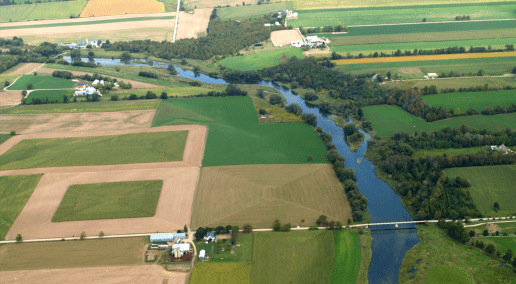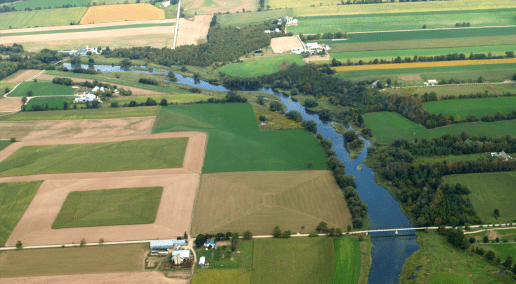Dr. Martin Chantigny, a researcher at Agriculture and Agri-Food Canada (AAFC) since 1997, works on evaluating and improving agricultural practices to maintain the productivity and health of agro-systems in a context of climate change by better understanding how to preserve and improve soil health. His talk at the Canadian Forage and Grassland Association’s (CFGA) 2025 conference in Guelph, Ontario, in December focused on the advantages of introducing perennial crops into annual cropping systems.
Martin began his presentation discussing soil organic matter and how it not only provides nutrients and energy for crops, but also for all soil inhabitants. He clarified the second role of soil organic matter is the part it plays in soil aggregation, which in turn helps soil manage water infiltration and oxygen diffusion. The third aspect of soil organic matter is that it acts as a sponge, providing resiliency to climate change, soil and plant productivity.
Soil organic matter content can change based on what type of crops, animal manure, crop residues and root types are applied to the soil. The roots play an important role in restoring soil health by stabilizing soil aggregates, fostering plant nutrients, attracting symbiotic organisms and becoming a food source to soil inhabitants when they die at the end of the season.
Perennial root systems have a greater impact on carbon gains over time compared to annual crop systems like cover crops, organic fertilizers or no-till or crop residues. The root cause? Perennial crops have active roots for a longer period, and they dedicate a greater portion of photosynthesis to root growth and maintenance. The most active perennials include timothy, perennial ryegrass, tall fescue and reed canary grass, all of which produce about 4.5 times more root biomass than annual crops.
In Eastern Canada, there is a loss of soil carbon due to the cultivation of former hay fields and pastures. He quoted several studies showing that soil organic matter is 15 to 30 per cent more with perennials than annuals. Rotating corn with alfalfa into the crop rotations can improve potential carbon gain by 50 per cent. He showed a study illustrating how, in just three years, soil organic carbon can be improved by adding perennial crops.
He added there is a perennial-animal manure synergy at work as well, they retain more animal carbon in the soil, compared to mono-cereal crops. This finding was illustrated in two long-term studies. This in turn helps improve corn yield as the crop has access to the resources it needs.
Martin closed by talking about the impact of perennial crops on root development and the role of bio-pores, pores formed by the action of living organisms. These help deep-root development, which increase water uptake capacity, improving the resistance of crops to drought.
2024 conference recordings
To hear all of this presentation, you can purchase access to it, and all of the recordings from the 2024 conference proceedings. Note, the recordings are available for free to those who registered for the 2024 conference. For more information, email [email protected].
Save the date for the CFGA’s 2025 conference
The CFGA’s 16th Annual Conference will take place Nov. 18 to 21 in Fredericton, New Brunswick. The conference is being organized in partnership with the CFGA’s provincial partner the New Brunswick Soil and Crop Improvement Association (NBSCIA). The theme is Greener Horizons: Technological Innovations in Forage and Grassland Management and the event will include pre-conference workshops, two days of presentations and a not-to-be-missed post conference tour to several New Brunswick farms. More details coming soon.




Leave a Comment